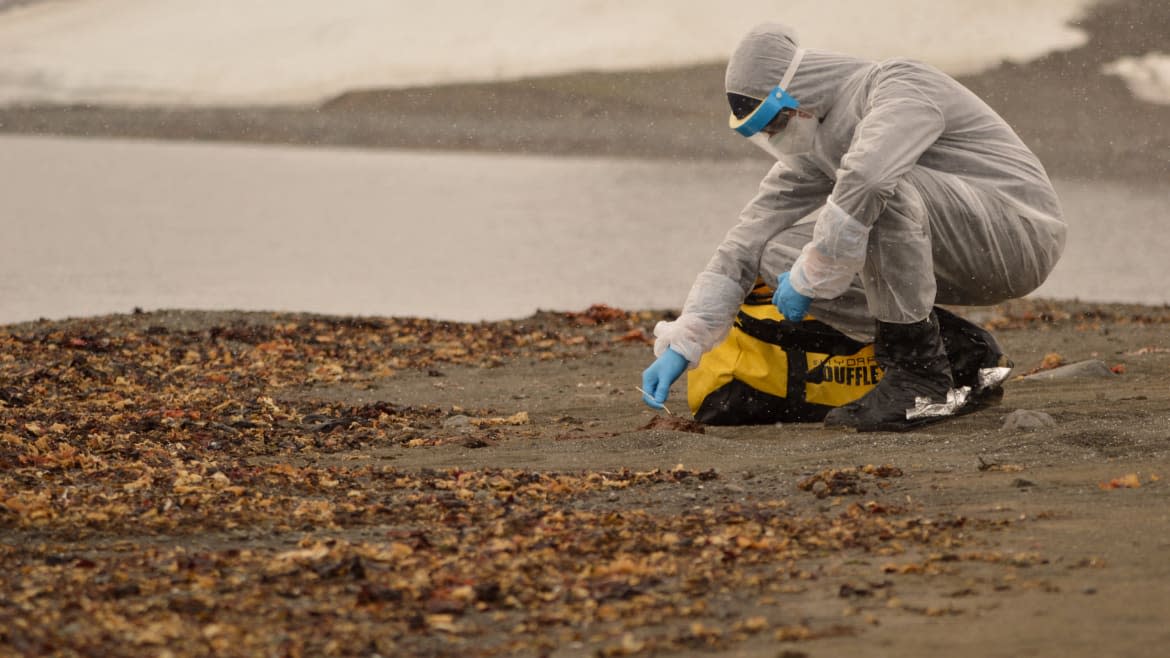Rare Human Case of Bird Flu Reported in Texas

A person in Texas has been diagnosed with a rare case of bird flu, marking the second known human infection ever in the United States, officials announced Monday.
The unidentified patient came down with the highly pathogenic avian influenza A, also called H5N1, after coming into contact with dairy cattle “presumed to be infected” with the virus, according to the Texas Department of State Health Services (DSHS).
“Avian influenza A viruses have only rarely been transmitted from person to person,” the DSHS announcement said. “As such, the risk to the general public is believed to be low; however, people with close contact with affected animals suspected of having avian influenza A have a higher risk of infection.”
The only other U.S. case of bird flu seen in a person occurred in 2022.
The Texas patient reported conjunctivitis-like eye redness as their only symptom “and is recovering” after being treated with antiviral drugs, according to the U.S. Centers for Disease Control (CDC). Human illnesses from bird flu “have ranged from mild (e.g., eye infection, upper respiratory symptoms) to severe illness (e.g., pneumonia) that have resulted in death in other countries,” the CDC said on Monday. Between 2003 and 2023, 248 people were infected with H5N1, resulting in 139 fatalities, according to the World Health Organization.
Other symptoms of H5N1 infection may include: fever, cough, sore throat, runny nose, headaches, fatigue, shortness of breath, diarrhea, nausea, vomiting, and seizures.
Cases among dairy cows were first detected last week in Texas, Kansas, and Michigan, according to the USDA, which said “presumptive positive test results” have also been found in herds in New Mexico and Idaho. The H5N1 virus first emerged in 1996, in Chinese geese. The following year, H5N1 was first seen in humans, in Hong Kong. In 2020, a highly contagious form of the virus spread throughout Europe and the rest of the world, including chickens farmed in the U.S.
Texas officials say people should avoid raw milk, and consume only milk sold in stores, which is required to be pasteurized and is safe to drink. Texas Agriculture Commissioner Sid Miller said last week that “[n]o contaminated milk is known to have entered the food chain; it has all been dumped. In the rare event that some affected milk enters the food chain, the pasteurization process will kill the virus.”
Cattle infected by H5N1 are said to “exhibit flu-like symptoms including fever and thick and discolored milk accompanied by a sharp reduction in milk production averaging between 10-30 pounds per cow throughout the herd.”
Monday’s DSHS bulletin was issued so health-care providers would be “vigilant for people with signs and symptoms” of H5N1, with a special focus on those who have had close contact with infected animals (within six feet) or who have consumed unpasteurized milk from dairy farms where suspected cases have occurred.
“Although this is an evolving situation, the risk to the general public is low,” the agency said. “People can protect themselves against flu by washing their hands often, covering their coughs and sneezes, not picking up dead birds and animals, and staying home if sick.”
Get the Daily Beast's biggest scoops and scandals delivered right to your inbox. Sign up now.
Stay informed and gain unlimited access to the Daily Beast's unmatched reporting. Subscribe now.


